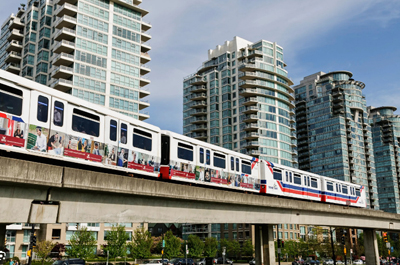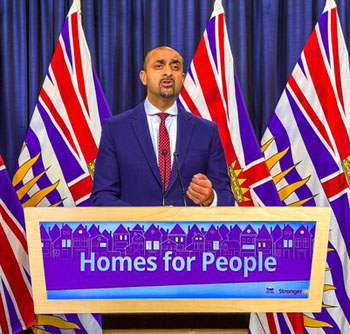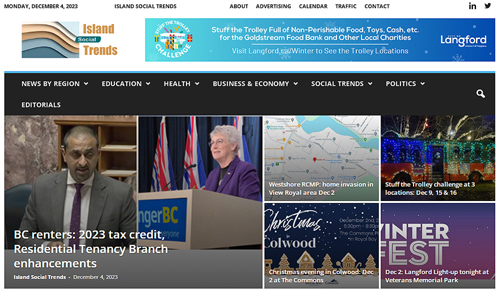Monday December 4, 2023 | VICTORIA, BC
by Mary P Brooke | Island Social Trends
Transit-oriented Development is a way that the BC government is trying to encourage higher-density housing along high-frequency transportation routes.
In new legislation (Bill 47), there are transit-oriented development (TOD) areas with minimum allowable density.
Meanwhile, if a developer can demonstrate that their business case can only support a project of lower height or density, that will be open to consideration by the province.
The Ministry of Housing has provided this statement to Island Social Trends:
- An area designated as a transit-oriented development (TOD) area will have minimum allowable density (floor area ratio and height) established by the Province. In the cited example, a developer may choose to request a rezoning with a floor area ratio and height that is lower than the minimum allowable. The local government is required to approve that density.
- The minimum allowable density that will apply within TOD areas and the criteria that local governments will use to designate their TOD areas will be included in the forthcoming TOD policy manual and regulations.
- Minimum allowable density requirements within TOD areas will be based on the type of community and proximity to the station. For a summary of the policy framework, please visit: https://news.gov.bc.ca/files/TOD_Areas_PolicyFramework.pdf
Around transit hubs:
In some cases in B.C., higher-density neighbourhoods have been established around transit hubs, but in other cases, restrictive zoning bylaws and parking requirements, along with delayed development approvals, have slowed down the delivery of homes and services near transit hubs.
As BC continues to invest significantly in transit infrastructure, the government says that it’s “important that this investment accommodate additional housing units to create vibrant and livable neighbourhoods”.
The legislation will require municipalities to designate Transit Oriented Development Areas (TOD Areas) near transit hubs. These TOD Areas are defined as land within 800 metres of a rapid transit station (e.g., SkyTrain station) and within 400 metres of a bus exchange where passengers transfer from one route to another (e.g., Newton Bus Exchange in Surrey).
West shore of Greater Victoria:
Here on south Vancouver Island, in the west shore area there are obvious corridors where frequent-transit (by bus) is available to residents. Obvious examples are Highway 1 (and feeder roads to the highway) and Highway 14 (Sooke Road / Island Highway — depending on what vicinity) come to mind.
Highway 1 provides ready access to View Royal and Langford.
The City of Colwood has recently designated Sooke Road through their municipality as a high-traffic corridor, as well as Metchosin Road which will increasing serve the high-density area of Royal Bay.
Municipal input:
Whereas several municipalities have been concerned about being left of the loop of housing decisions as a result of the suite of new housing legislation approved this fall, there will still be plenty of opportunities for municipal leadership (and any public engagement they organize) to weigh in on transportation routes, infrastructure development, and areas of town where high-density is suited to the neighbourhoods.
What some of the new legislation allows (e.g. with Bill 44 where single-family lots can be redeveloped with three or four units, or even six near frequent transit) is a gentle transition of communities with densification without a series of onerous public hearings that — in only about 17% of cases result in any change to a development and usually are attended by the most vocal of opponents.
Following the release of a provincial regulations and policy manual this month (December 2023), the lands that local governments have designated for transit-oriented growth in their official community plans will be immediately captured under the new minimum allowable density requirements included in the legislation.
Support for setting site standards:
To support the legislation, the Province will create a provincial policy manual to support municipalities with setting their site standards and moving forward with proposed housing projects.
June 30, 2024 deadline to designate TODs:
For the remaining TOD Areas that require local government designation, municipalities will have until June 30, 2024, to designate these areas (pending regulation). It is expected that approximately 100 TOD Areas will be designated in approximately 30 municipalities throughout B.C. within the first year of the new legislation coming into effect.
===== RELATED:
Visit the Island Social Trends HOUSING NEWS SECTION for more articles.








